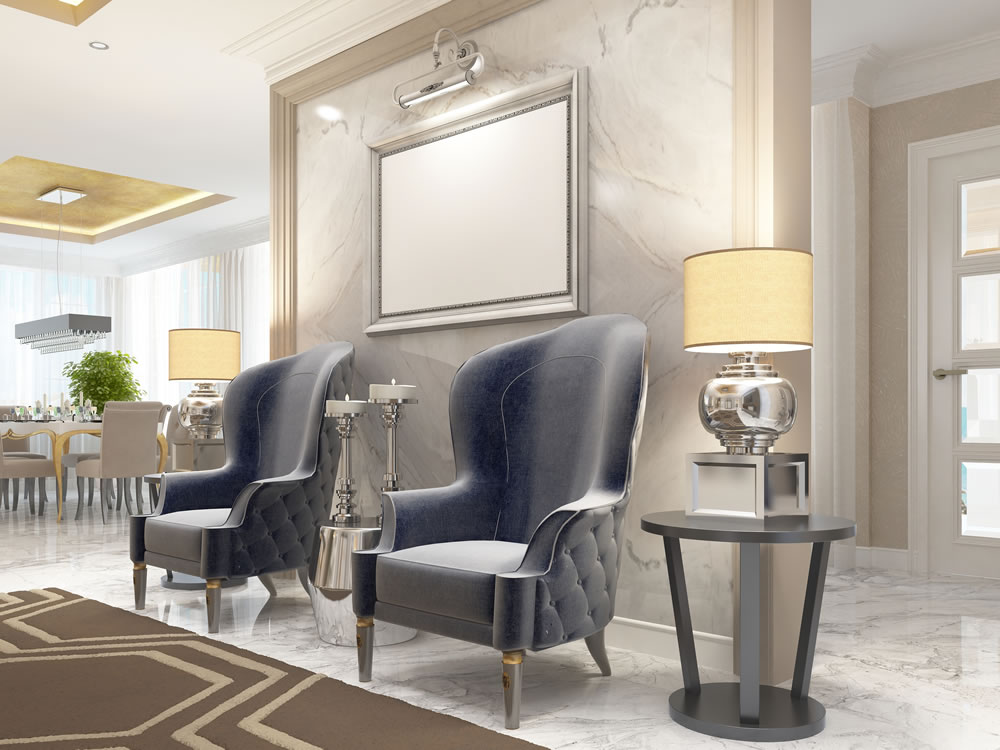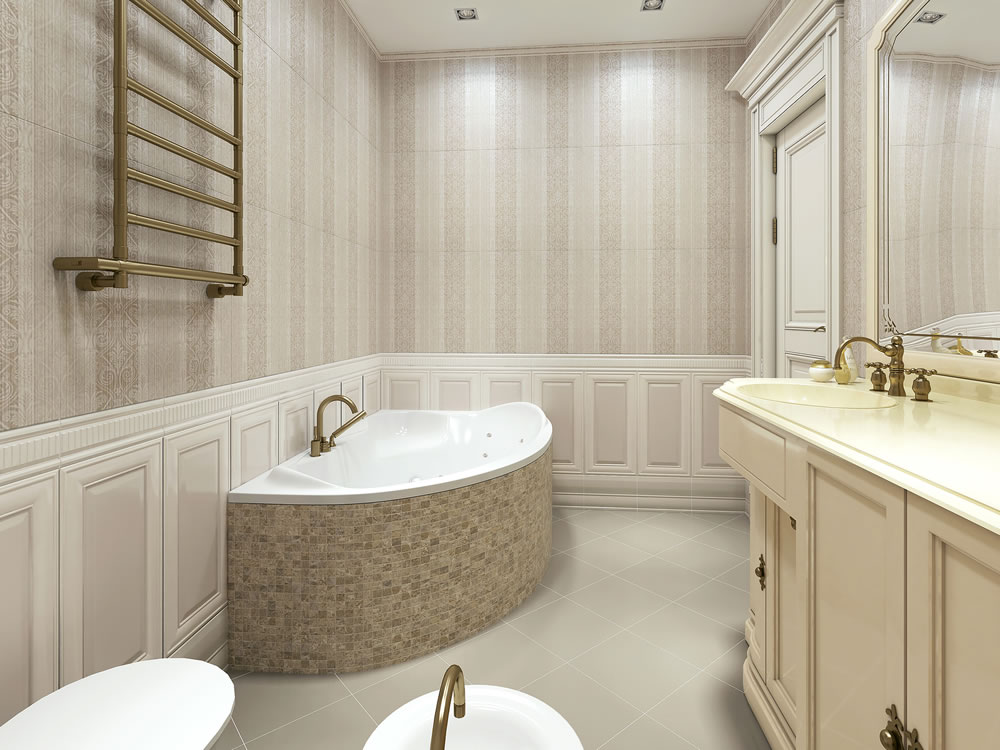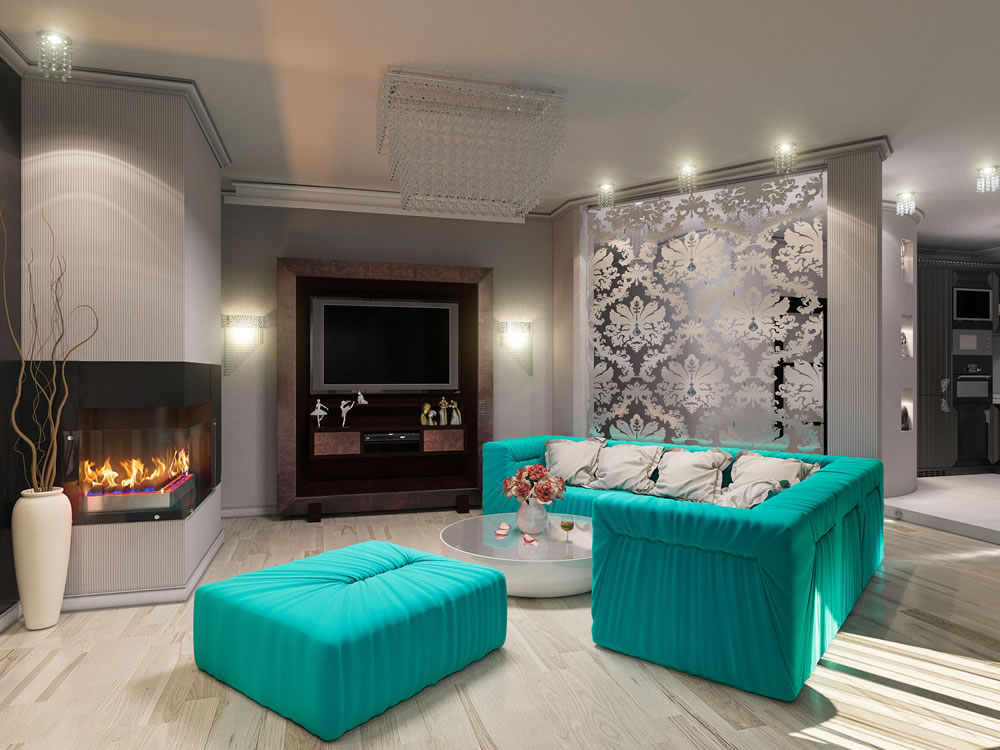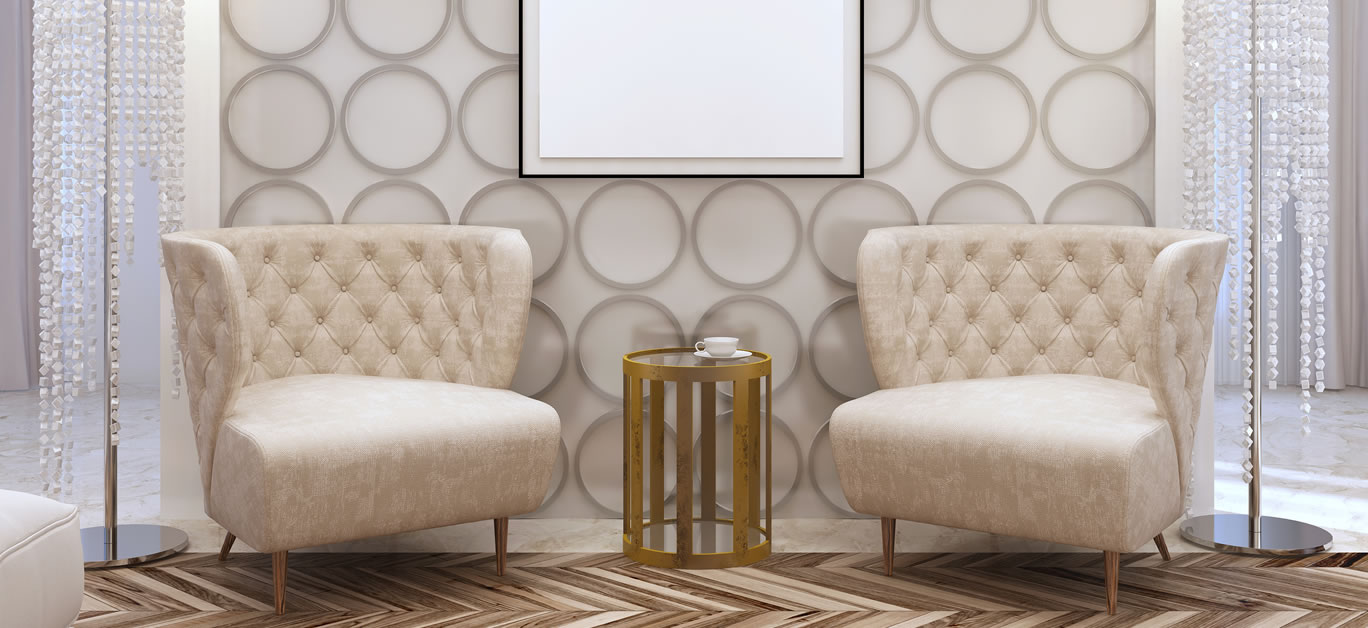If you studied English literature, you may be guilty of under-appreciating The Great Gatsby – but it’s hard to deny the Fitzgerald classic is a gem in the literary world. And if you haven’t read the book, but you’ve seen the Baz Luhrmann production starring Leonardo Di Caprio, you’re probably inclined to agree. Do you wish you could have lived in the roaring twenties? Well, Art Deco and all of its geometric patterns may just be for you.
Deco has the ability to attract all of the glamour of one of Gatsby’s parties into a 21st-century home. Short for Arts Decoratifs, Art Deco is characterised by decadent detail work, bold geometry and rich hues. The style is exuberant and still features in beautiful spaces all around the world in the form of wall coverings, fixtures and furniture.

Style
Almost anything geometric or angular-shaped can be related to the Art Deco movement. Textures and colours often include chrome, shiny fabrics, mirrors and mirrored tiles. Imagery involves skyscrapers, cruise liners, cars, aeroplanes – anything sumptuous. It can also include nature and motifs featuring sunrises, flowers and shells. Art Deco is big on theatrical contrast; glossy black lacquer and polished wood mixed with furs and satin is a popular occurrence.
Painters such as Picasso were experimenting with angles, geometry and space, so it’s no surprise that cubism also remains popular today. And the early days of Hollywood largely featured shiny fabrics, mirrors and stylish, subtle lighting – such as that available from Pagazzi. As a result, the ever so fashionable Deco snowballed in popularity, and it continues to do so today.

Timeless
A plausible reason for Art Deco’s revival is that it may be a naturally occurring next step from mainstream modern design. Much like Art Deco, the modern style uses clean lines, but features fewer colours and places greater emphasis on texture. Deco is alluring because it entwines the cleanliness and structure of modern design with bolder colours.
Retro is favourable
Even in the age of smartphones and AI, we all long for a simpler time every now and again; there’s something therapeutic about reminiscing. This is something evident in the resurgence of Art Deco features in many homes, both in that of boomers and millennial generations. The structured and obedient style of Deco is nostalgic and has the ability to capture attention immediately. The featured geometric shapes offer a streamlined look that people long to work within their homes.

Prosperity
It makes sense then that something largely associated with Jay Gatsby is also associated with prosperity and also somewhat ironic that interior designers are longing for a return to the past, just like Fitzgerald’s protagonist. The twenties are a decade remembered for their economic boom, prior to the Wall Street Crash.
The wealthy and middle class truly prospered during this era and displayed their wealth and success with elaborate furniture and ornate Art Deco pieces. And in an age where the glamour of wealth is held in such high regard on social media, it’s no surprise that we long again for a style associated with greatness.






















